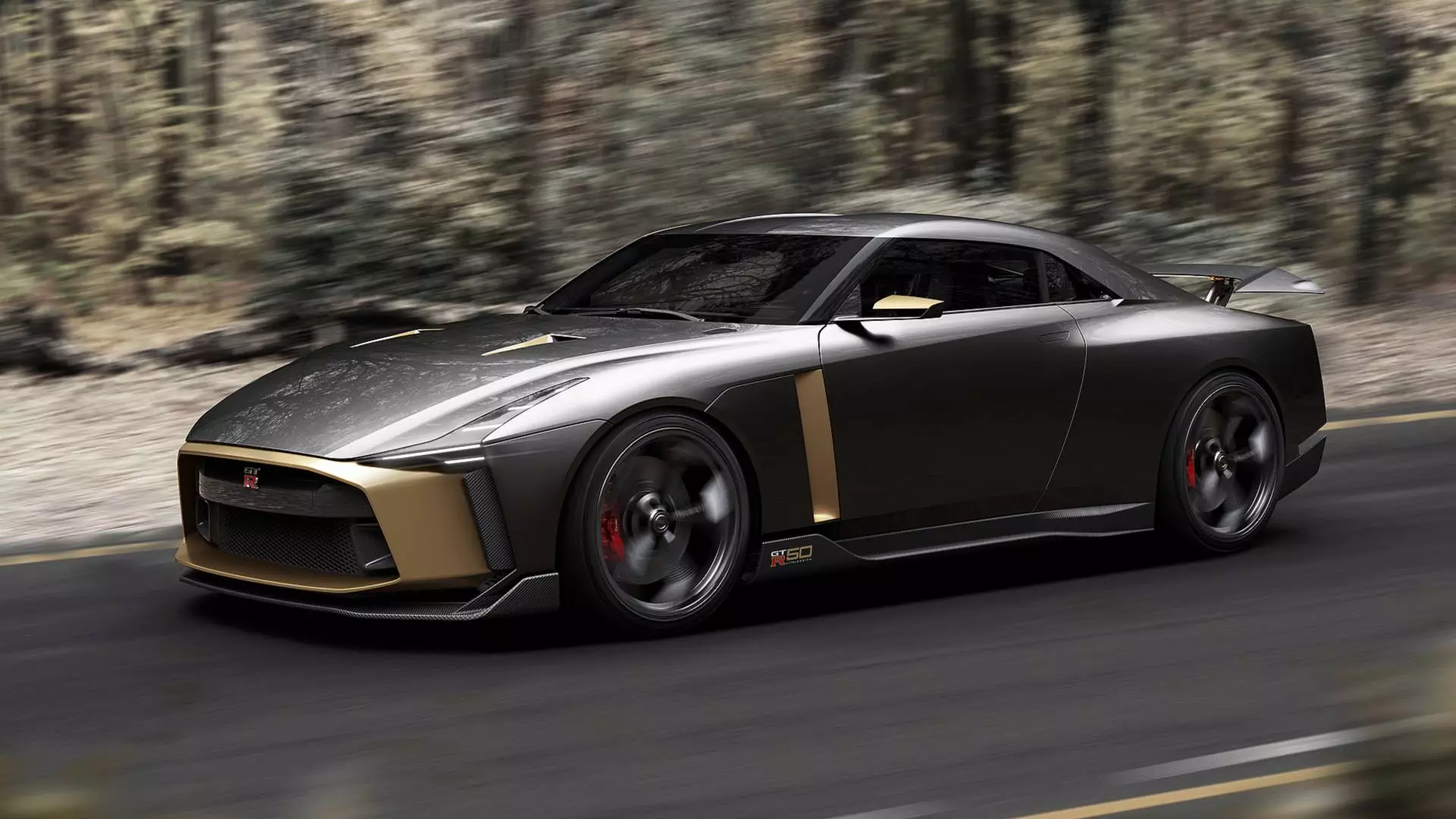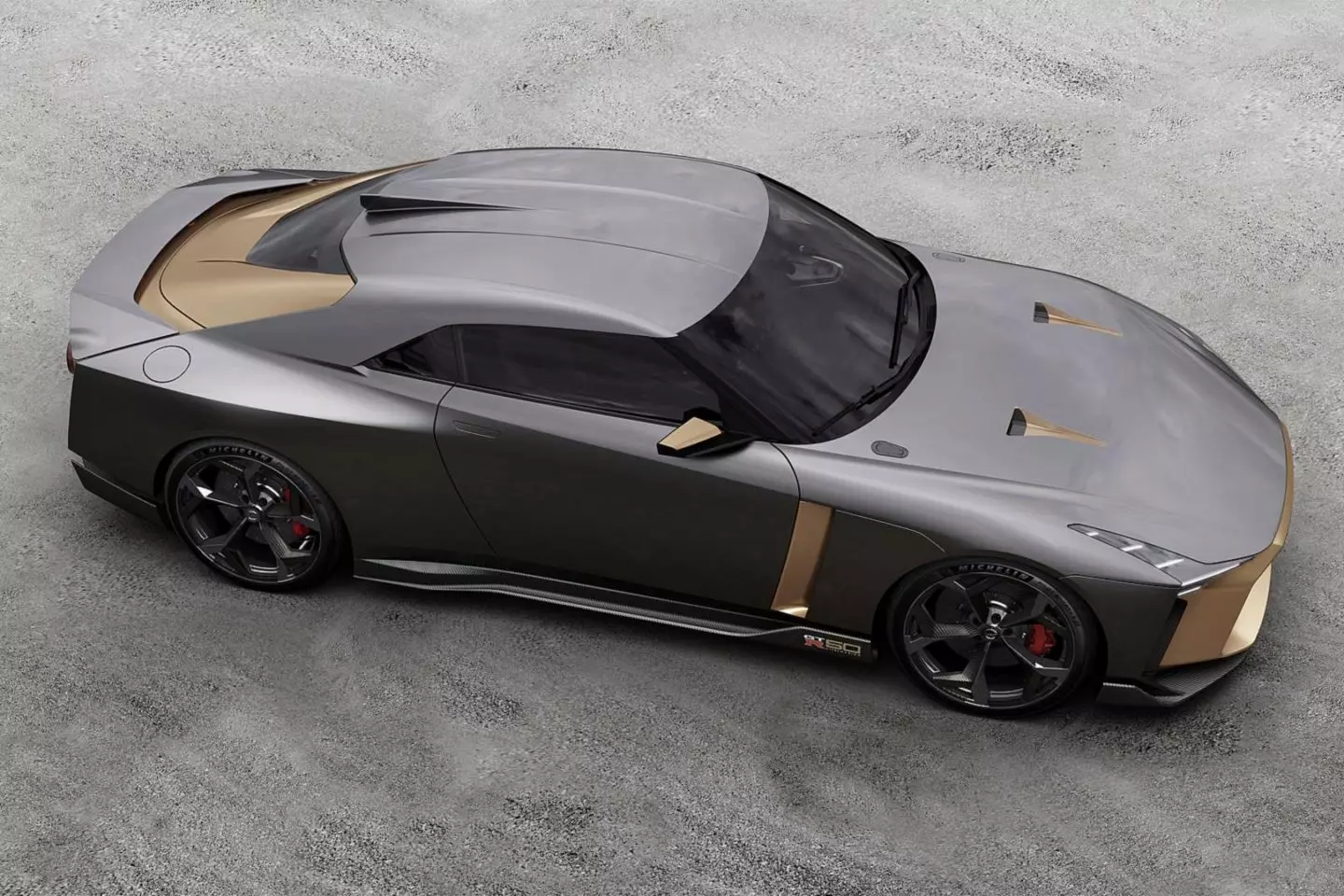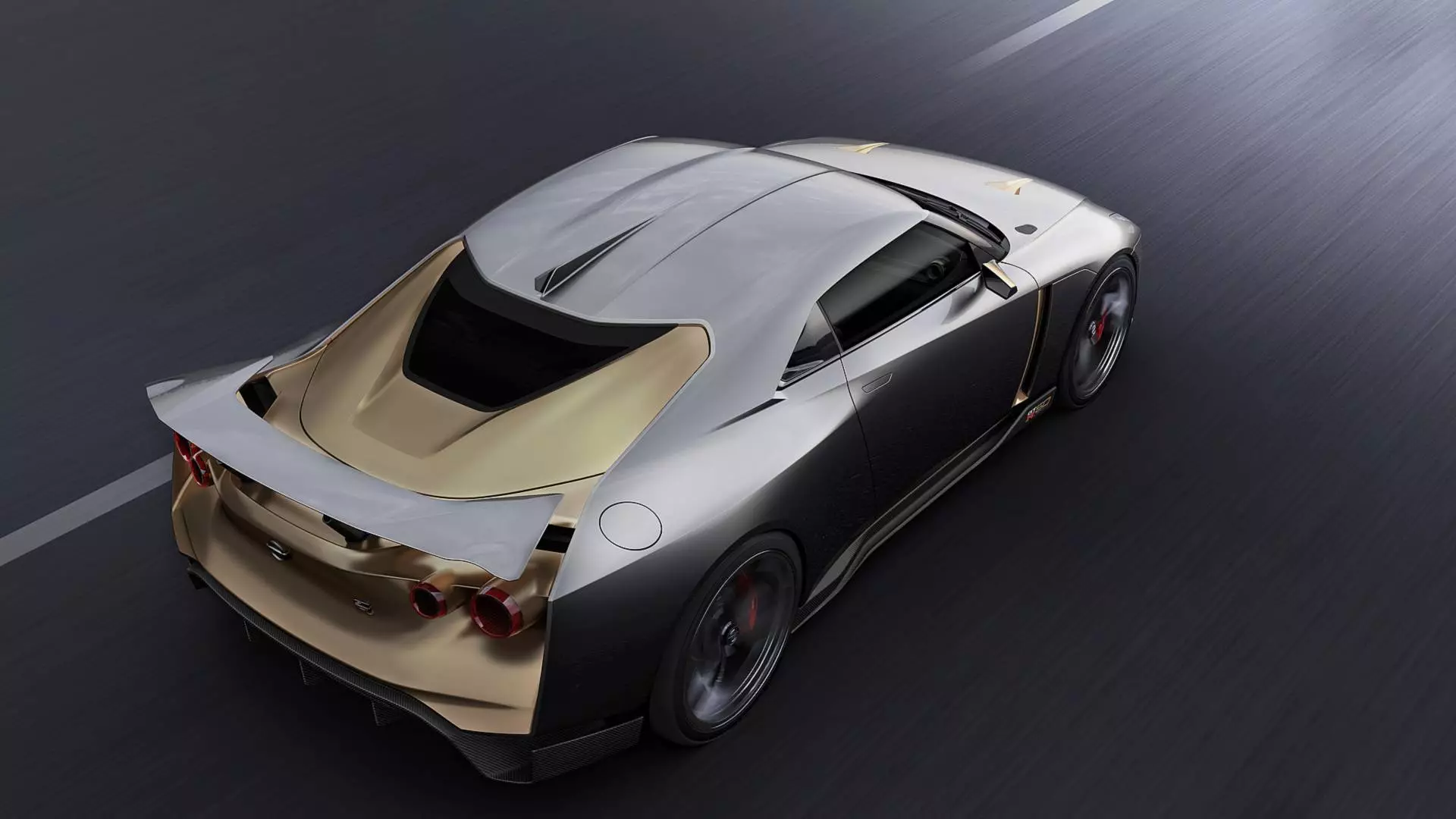Italdesign, created in 1968 by Giorgetto Giugiaro and Aldo Mantovani — today fully owned by Audi — is celebrating its 50th anniversary this year. Ephemeris that coincides with the birth of the first Nissan GT-R — based on Prince Skyline, would become known as “Hakosuka” or by its code name, KPGC10.
What better way to celebrate this convergence than to join forces — a first between the two companies — to create a GT-R with the unique nature of Italdesign?
The result is what you can see in the images — the Nissan GT-R50 . It is not just another concept, this prototype is fully functional, based on the GT-R Nismo, which was subject to changes not only visual but also mechanical.

More performance
As if to demonstrate that the Nissan GT-R50 is not just for "show", great emphasis is given, not only to its new bodywork, but also to the work carried out on the VR38DETT , the 3.8 l twin turbo V6 that equips this generation of the GT-R.
Nobody can accuse this engine of suffering from lack of performance, but in the GT-R50, the amounts debited rose to 720 hp and 780 Nm — 120 hp and 130 Nm more than the regular Nismo.

To achieve these numbers, Nissan took to the GT-R GT3 its larger turbos, as well as its intercoolers; a new crankshaft, pistons and connecting rods, new fuel injectors and revised camshafts; and optimized the ignition, intake and exhaust systems. The transmission was also reinforced, as well as the differentials and axle shafts.
The chassis did not remain unscathed by incorporating Bilstein DampTronic adaptive dampers; Brembo braking system comprising six-piston calipers at the front and four-piston calipers at the rear; and without forgetting the wheels — now 21″ — and the tires, Michelin Pilot Super Sport, with dimensions 255/35 R21 at the front and 285/30 R21 at the rear.
And the design?
The differences between the GT-R50 and the GT-R are clear, but the proportions and general features are, without a doubt, of a Nissan GT-R, highlighting the chromatic combination between gray (Liquid Kinetic Gray) and the Energetic Sigma Gold, which covers some elements and sections of the bodywork.

The front is marked by a new grille that covers almost the entire width of the vehicle, contrasting with the new, narrower LED optics that extend through the mudguard.
On the side, the GT-R's characteristic roofline is now 54mm lower, with the roof having a lowered center section. Also the “samurai blade” — the air vents behind the front wheels — are more prominent, extending from the bottom of the doors to the shoulder. The rising waistline tapers towards the base of the rear window, highlighting the massive “muscle” that defines the rear fender.

The rear is perhaps the most dramatic aspect of this interpretation of what a GT-R should be. The circular optical characteristics remain, but they appear to be practically separated from the rear volume, with the latter also appearing not to be part of the bodywork, given the differentiated treatment it presents — both in terms of modeling and color.

In order to give cohesion to the whole, the rear wing — gray, like most of the bodywork — ends up "finishing" the bodywork, as if it were an extension, or even a "bridge" between its sides. The rear wing is not fixed, rising when necessary.

The interior is also new, with a more sophisticated look, making use of carbon fiber — with two distinct finishes —, Alcantara and Italian leather. Like the exterior, the golden color is visible accentuating details. The steering wheel is also unique, with its center and rims made of carbon fiber and covered in Alcantara.

According to Alfonso Albaisa, Nissan's senior vice president for global design, the Nissan GT-R50 does not anticipate the future GT-R, but creatively and provocatively celebrates this double anniversary.
